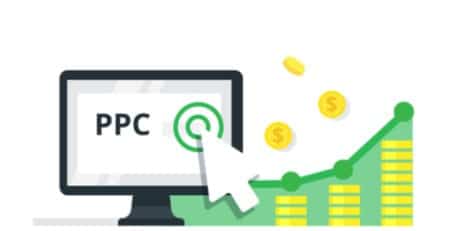Segmentation Models Are Outdated: How to Update Your Marketing Segmentation Practices
The 2016 US governmental election is probably the most significant and also most public failure of segmentation versions in current memory. Many designs not just predicted Hillary Clinton’s victory by a comfortable margin but also disregarded the group, racial, as well as geographical sections that forecasted a various outcome– and pushed Donald Trump’s victory.
Taking that failure as an instance, as well as considering the total outdated mode of analysis that division versions appear to be embedded, we should confess that segmentation models should progress.
Particularly for companies, an evolution can cause extra reliable advertising techniques and even more effective advertising efficiency in our progressively vibrant marketplace.
Why Segmentation Models Could Use an Update
Since the 1980s, companies have spent a great deal of time and effort thoroughly segmenting target markets on the basis of demographics and producing characters for advertising groups. Nevertheless, those methods are increasingly pointless, for a few factors.
– First, there is no longer a competitive advantage to conventional segmentation. Every business is doing fundamental recency, frequency, monetary (RFM) division using the very same mix of behavioral or group overlay information.
– Second, prospective clients transform faster compared to fixed models. Many segmentation models that are fixed by design or upgraded just a couple of times a year, at best, don’t capture consumers’ fast-changing habits, particularly in high-velocity markets such as innovation and also retail.
– Third, the versions’ predictive power does not translate to real return on investment. Typical division approaches were created for mass-media acquiring and also are not really efficient in a progressively one-to-one addressable globe.
Forecasting customer behaviors only by focusing on identifiers such as demographics is misguided. Even formerly successful advertising projects based on these strategies are now battling.
Tesco, as an example, famously spearheaded combining RFM segmentation with one-to-one targeting at a range in the 1990s via its Clubcard program. The program was aggressively electronic for its time, fulfilling customers for getting healthy food as well as showing loyalty. But due to the fact that the model no longer offers a competitive advantage, Tesco’s 20 million-member loyalty base is not creating development today.
Advantages of Switching to Needs-Based Segmentation
Many online marketers start with demographic-based segmentation due to the fact that it’s easily readily available. But America is predicted to be a majority-minority country by 2040. As modern, multigenerational family members frameworks continuously raise as well as expand, it will certainly be even more difficult to fit customers into a single market bucket.
Therefore, electronic habits, technology adoption, political association, and social reasons are regularly stronger predictors of getting habits compared to even more typical segments. Moving advertising initiatives to this needs-based segmentation approach, as a result, gives several benefits:
– A much better understanding of real-time modifications in target audience needs. Due to the fact that needs-based division versions are more vibrant as well as flexible, they help teams make the most of the messaging’s effect.
– Expanded possible messaging and also touchpoints. As opposed to isolating a purchaser right into one section or offering him a handpicked offer that relates to only that section, groups could target a solitary possibility with several needs via messaging that attends to each demand particularly.
– Better advertisement timing. In boosting a campaign’s timing and also context by recognizing the need-state, groups can represent how that understanding dramatically alters messaging. As an example, a morning coffee pit-stop is various from a weekend grocery purchasing journey. Consumers involve each task with specific affectations as well as goals, but initiatives that target both just as under the umbrella of “food getting” miss that nuance.
– Increased management efficiency. Typical segmentation across numerous measurements with thousands of micro-segments rapidly comes to be unwieldy. Making use of needs-based segmentation reduces intricacy and also may even result in set you back savings by improving operations.
How to Update Your Segmentation Model
Customers tend to view numerous modern-day marketing initiatives– such as newsletters, marketing emails, or advertisements– as sound to ignore. However, marketing teams could sharpen their strategies and better customize them to customers’ demands by following these five actions:
- Shift to a racking up system. Rating your customers according to the actions relevant to the firm’s brand name or category enables advertising groups to develop as well as sequence dynamic customer trips targeting precisely the correct time and also place. Teams could after that use these key moments of inflection (or “moments of need”) to remain to analyze their customer base even as it evolves.
- Buy determining consumer need-states. Via brand-new information sets, tracking techniques, and signals in actions information histories, advertising and marketing groups can see where the brand name is able to meaningfully engage. What details bits are prospects trying to find? Exactly what are they trying to contrast, discover, or determine? Just how can teams offer devices to assist them get over those buying obstacles?
- Recognize your winning as well as shedding approaches. Making use of all the above information, teams should after that examine their existing marketing communications to assess exactly how consumers receive them. Such an audit aids you figure out which programs and efforts genuinely add worth for possible customers as well as are consequently worthwhile financial investments.
- Revamp initiatives along the customer trip. The, even more, you can place your firm as useful via a customer’s journey, the higher your return. Groups have to establish numerous possibilities along the purchaser’s journey for prospects to reveal interest and display screen involvement– ones that focus on those “moments of demand”– since it’s not just at the point of purchase that you need to convince consumers.
- Take notice of honest and social borders. As you construct needs-based and also precision messaging, remember the lawful, moral, as well as social limits of using targeted information. Remain well within those bounds, because breaking a possible buyer’s count on is the easiest means to sabotage your advertising efforts. You don’t intend to make it seem like you’re spying into individuals’ lives. Rather, delight consumers with tools, tips, and also handy info at specifically the factor they require them.
Needs-based segmentation provides a much deeper understanding of motorists to buy and offers a much more effective advertising process. Despite the fact that your product and services fix a specific collection of demands several customers have in common, generalized efforts invested aiming to engage those certain factors are much less successful compared to those that constantly produce more targeted messages.
Because as the world progresses and customers continue to expand, so should your advertising initiatives.






